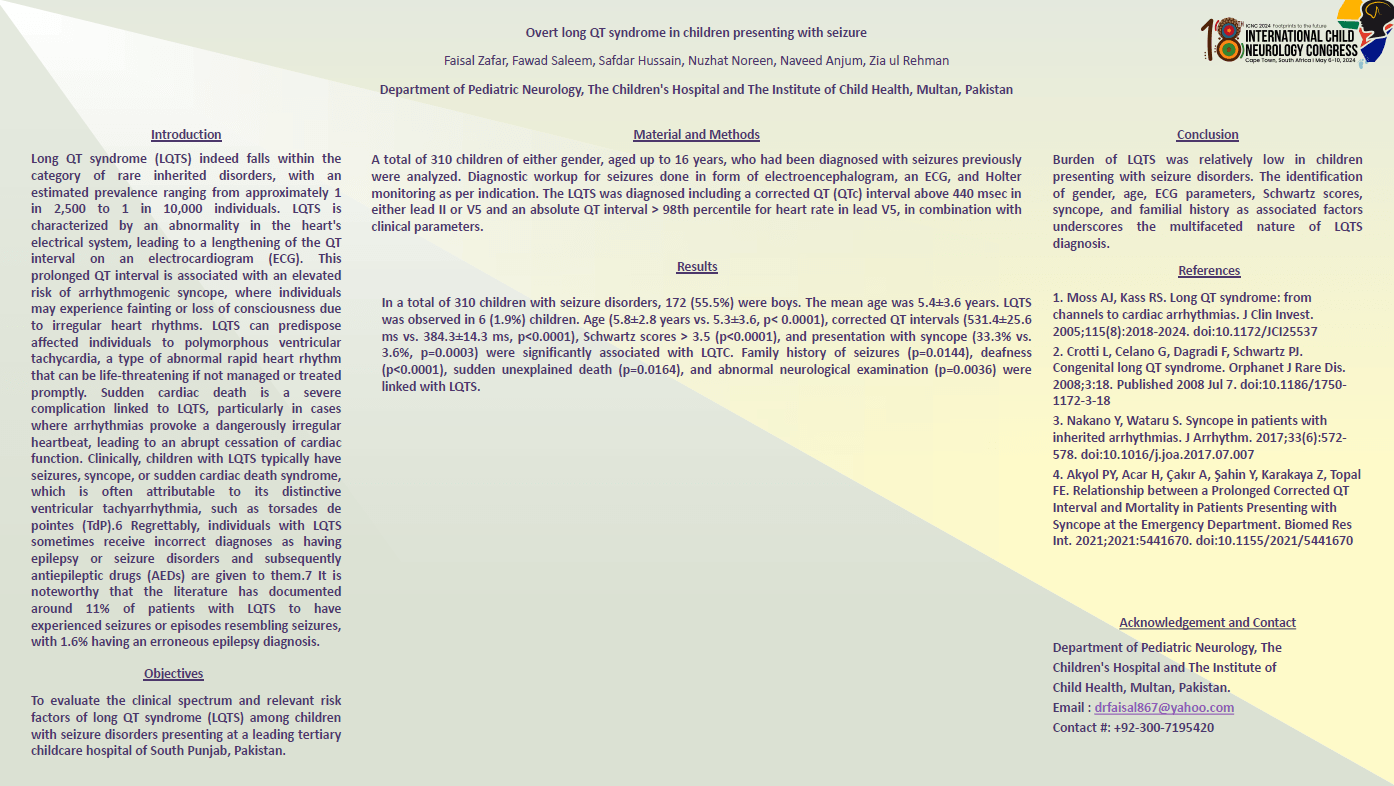Overt Long QT Syndrome In Children Presenting With Seizure Disoder
Abstract Objective: to evaluate the clinical spectrum and relevant risk factors of long QT syndrome (LQTS) among children with seizure disorders presenting at a leading tertiary childcare hospital of South Punjab, Pakistan. Study design: A cross-sectional study. Place and duration: The department of pediatric neurology and cardiology, The Children’s Hospital Multan, Pakistan, from September 2021 to October 2023. Material and methods: A total of 310 children of either gender, aged up to 16 years. Electroencephalogram(EEG), ECG, and Holter monitoring was done. The LQTS was diagnosed including a corrected QT (QTc) interval above 440 msec in either lead II or V5 and an absolute QT interval > 98th percentile for heart rate in lead V5, in combination with clinical parameters. Results: In a total of 310 children with seizure disorders, 172 (55.5%) were boys. The mean age was 5.4±3.6 years. LQTS was observed in 6 (1.9%) children. Age (5.8±2.8 years vs. 5.3±3.6, p< 0.0001), corrected QT intervals (531.4±25.6 ms vs. 384.3±14.3 ms, p<0.0001), Schwartz scores > 3.5 (p<0.0001), and presentation with syncope (33.3% vs. 3.6%, p=0.0003) were significantly associated with LQTC. Family history of fits (p=0.0144), deafness (p<0.0001), sudden unexplained death (p=0.0164), and abnormal neurological examination (p=0.0036) were linked with LQTS. Conclusion: Burden of LQTS was relatively low in children presenting with seizure disorders. The identification of gender, age, ECG parameters, Schwartz scores, syncope, and familial history as associated factors underscores the multifaceted nature of LQTS diagnosis.
Faisal Zafar
Children's hospital
Pakistan
Fawad Saleem
Children's hospital
Pakistan

Fawad Saleem
Children's hospital
Pakistan